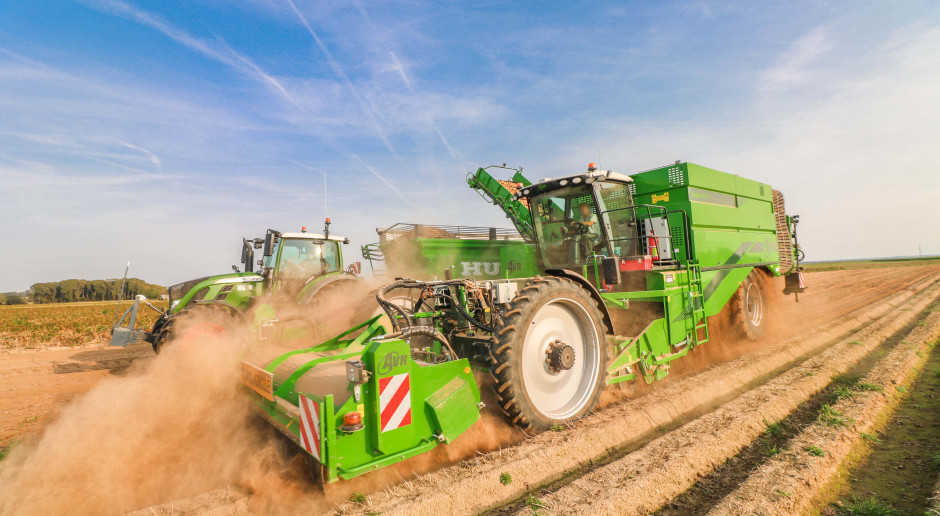This year, the Belgian company AVR, specializing in potato harvesting, celebrates its 175th anniversary. On this occasion, one of the best AVR devices, the Puma model, will be released in a limited anniversary version.
The limited Puma 4.0 uses the technology of the well-known Puma combine harvester. Since 2006, over 550 units have been built (and are in operation in Western Europe, Canada and Australia), and the next version 4.0 is now entering the market. AVR decided to combine its heritage and future to create a “real eye-catcher”. The self-propelled harvester with a retro look has the latest technology.
175 lat AVR
Today, when growing cereals is, to put it mildly, unprofitable, some people will certainly pay attention to plants such as potatoes, which are still quite profitable. Long-forgotten potato planters, abandoned somewhere under a tree, were put into action. When it comes to collection, of course, the best solution are products from leading manufacturers such as Grimme, AVR or Ropa.
The AVR company celebrates its 175th anniversary this year. The history of the company begins in 1849, when Pieter Vansteenkiste founded a forge in Roeselare, where he produced agricultural and gardening tools. Later, the company was named after his son: Alfons Vansteenkiste with the note Roeselare, denoting the town where the plant is located. This is how AVR was born.
In 1970, the company specialized exclusively in potato cultivation, and AVR’s offer included mechanical potato harvesters. A dozen or so months later, engineer Norbert Nollet joined AVR, under whose influence combine harvesters are developing at a rapid pace: from single-row, double-row to four-row.
In 1973, Nollet took over the AVR company, purchasing it from his son Alfons Vansteenkiste. The product range is gradually expanded to eventually cover the entire potato growing process, from preparing the ground to planting, harvesting, haulm management and storage.
After several trials in the early 1970s, the first 4-row self-propelled potato harvesters on a Moreau frame leave the workshop in 1975. In 1986, the first 2-row self-propelled bunker harvester is created, and in 2006 AVR launches its first Puma: A 4-row self-propelled combine, currently in its fourth generation, which remains the flagship of AVR.
Concluding the note about the company’s history, it should be mentioned that in 1998 the AVR-Machinery branch was taken over by the Dutch company Netagco BV, but in 2003 the remaining part of AVR took over this activity again. It is worth adding that in 1983 the company was divided into the hand tools and AVR machines departments.
Puma 4.0 in Retro version
What do we know about the limited-edition machine? Not much for now. It will certainly contain the mechanics of the latest Puma 4.0 model, it will have special anniversary stickers and it will be built in a small, limited number.
Orders for the machine are expected to start soon. Every customer who buys Puma 4.0 this year will also receive a miniature version. This also applies to the limited edition Puma 4.0.
The standard version of the Puma combine harvester is 4-row, has a Volvo Penta engine with a power of 469 HP, weighs 23.5 t, and has a row spacing of 75 or 90 cm.
– .


